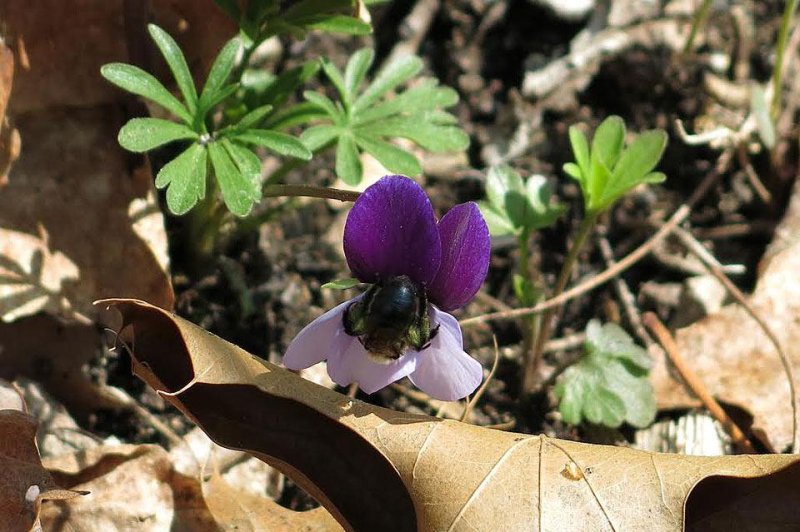Bees hunt for nectar upside down on the bicolor birds foot violet flowers so their backsides are warmed by the dark petals. Photo by Zong-Xin Ren/SLU
ST. LOUIS, Jan. 5 (UPI) -- New research suggests a native Missouri bee species is skewing the reproductive patterns of wildflower morphs -- a variance of leaf or flower petal patterns -- in cooler forests.
Peter Bernhardt, a professor of biology at Saint Louis University, discovered a discrepancy among the morph ratios of birds foot violet flowers, Viola pedata, in different Missouri habitats. His research suggests the discrepancy is the result of the preferences of native bees.
Under most conditions, the Carlin's bee, Andrena carlinii, prefers the concolor morph to the bicolor morph. The concolor version features five light violet-mauve petals, while the bicolor form is accented by two dark purple petals on top.
In a sunny open field, Bernhardt and his researcher partners found a ratio of 40 to one, concolor to bicolor. But a violet population in a section of shady woods featured a more even split.
Bernhardt hypothesized the bees took to the bicolor morphs in woods as they offer the bees warmth on cool spring days as the sun moves through the forest and heats up the darker colored petals. He and his fellow field researchers observed bees always feeding upside down, so the bees backside would be warmed by the top pedals.
Sure enough, a thermocouple and a hypodermic tissue probe revealed the dark petals to be 5.4 degrees Fahrenheit warmer than the surrounding air when warmed by rays of sun peering through the forest canopy. In the sunny glade, warmth is abundant, but in the forest it's less available and more appreciated.
"Remember how you were told that a dark coat keeps you a little warmer on a cold but sunny day?" Bernhardt said in a news release. "Some plants blooming in chilly environments have dark purple or almost black patches on their flowers to keep cold-blooded insects toasty warm as they pollinate."
Bernhardt and his colleagues detailed their investigation of the unique bee-violet relationship in the Journal of Pollination Ecology.















